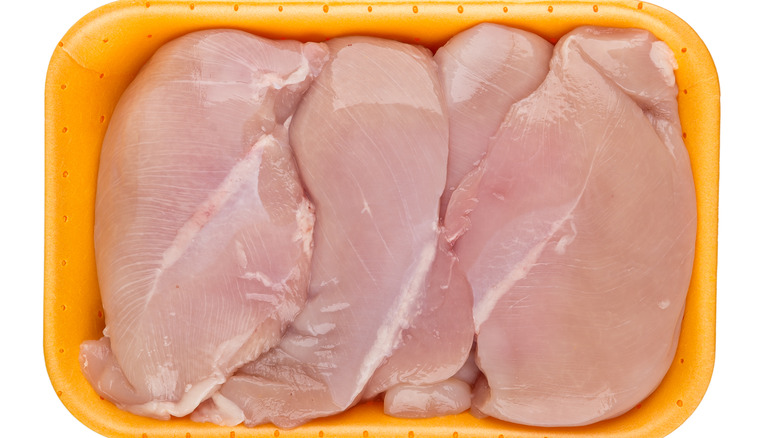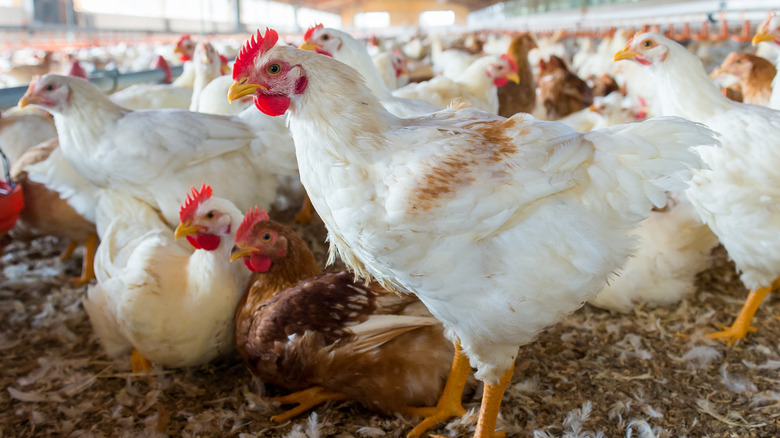What It Really Means When Your Chicken Breast Has White Stripes
Even when in a rush to shop and get out of the store fast, most people pause for at least a few seconds to evaluate the packages of boneless grocery store chicken breasts before selecting one. Shoppers may not be 100% sure what they're looking for, but there's a gut instinct that says chicken either looks good or looks a little off. And boneless chicken breasts with white striping definitely look off.
Different from the bit of fat that is sometimes found on the edges of chicken breasts, these are tiny, white lines that run through the meat. According to TheKitchn, this occurs as the result of an issue with muscle growth in chickens. In particular, the white stripes are thin layers of fat that run between layers of muscle, meaning that the chicken breast has more fat than one without this striping. These extra layers of fat not only make chicken breasts look less appealing, but they may also affect the texture and quality of the chicken. What causes this muscle disorder and striping? The reason is directly related to Americans' increased appetite for chicken and the way the industry is trying to keep up.
These industry practices can lead to striping in the chicken breast
According to Masterclass, the appeal of boneless chicken breast is that it's high in protein — 26 grams in a 4-ounce serving — and very low in fat, with only about 1 gram in a serving. The cooking time is short because there's almost no fat to break down, and when cooked right, chicken breast is juicy, tender, and extremely versatile. The nutritional and cooking advantages also mean that demand for chicken is far higher than for other meats, with the average American consuming over 97 pounds of chicken each year, according to the National Chicken Council.
To keep up, the chicken industry has shifted focus on growing chickens faster and to much larger sizes than in decades past, according to Southern Living. With traditional and free-range methods of raising chickens, the birds might only reach 4 pounds in size. Larger, more industrialized chicken producers are focused on methods that create much larger birds and in half the time that they normally need to grow. The breeding conditions used to grow bigger chickens faster have lead to the muscle disorder that creates the white striping in chicken breast. In addition, the meat has more fat and is less tender than a chicken breast with no striping.
Southern Living recommends looking at packages of chicken breast carefully to avoid buying those with white striping and to buy from chicken farms and local growers who breed and raise the animals under more natural conditions.

